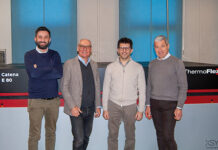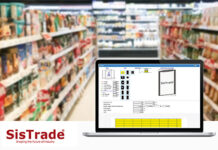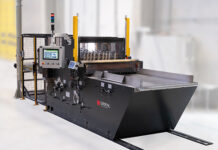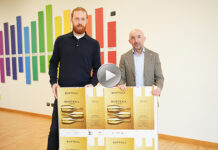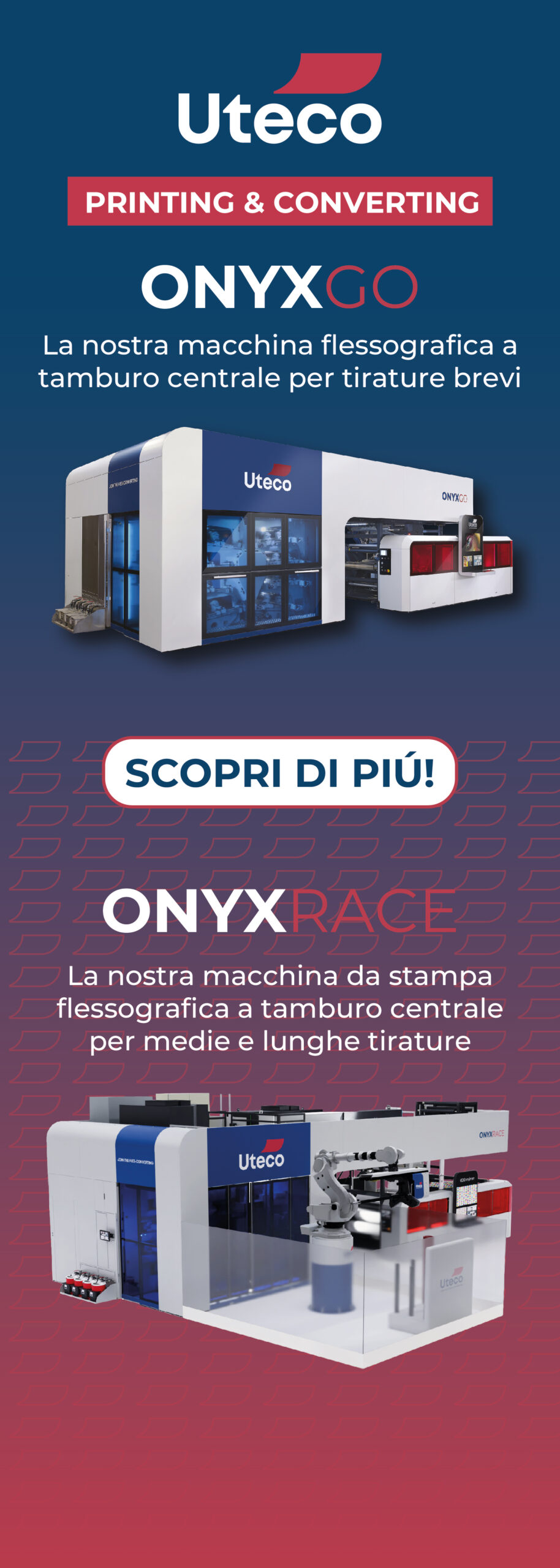From the partnership between Carminati, a prepress service, and Toppazzini, an integrated box manufacturer, came the project that impressed the jury the most at the latest edition of Best In Flexo award organized by Atif. It also won the Best In Show award, selected among all entries regardless of category. We discuss it in this article and in a video interview with the key players, Carlo Carminati and Umberto Toppazzini.
It is now a fact that jobs presented at Best In Flexo are all of remarkable quality, regardless of category or graphic subject. The Italian printing and converting industry in the packaging sector is certainly among the world’s top in terms of quality, and this is not a novelty. Some jobs, however, manage to stand out, capturing the observer’s attention, that is the consumer, who, let’s not forget, is the ultimate judge of any printed packaging and rewards the proposed solutions through purchasing decisions. When these high-impact projects also catch the attention of the technical jury of an award like Best In Flexo, success is not only recognized but also guaranteed. This is precisely what happened with the job presented by Toppazzini, an integrated box manufacturer based in San Daniele del Friuli (Ud), with the support of Carminati’s prepress service from Antegnate (Bg). Their visually striking graphic project, displayed during the award ceremony last November in Milan, immediately caught the attention of industry professionals and attendees.
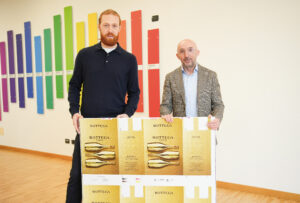
The recognition was further confirmed by the technical jury’s judgement for this work, which placed first in the category of “Innovative use of flexographic process”. The jury highlighted the excellent registration, accurate color application, high-light printing quality, good text readability and cleanliness, smooth gradients, and the remarkable continuity effect achieved between the face and back, printing as well as the almost tactile background texture. The final result was an outstanding chromatic effect, considering that only four CMYK colors were used.
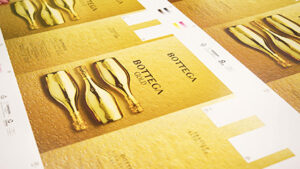
A longstanding technical partnership
The collaboration between Toppazzini and Carminati dates back to the early 2000s, coinciding with the introduction of modern flexo printing technologies, which Toppazzini adopted. These advancements significantly improved the quality of printed corrugated packaging, a process where prepress plays an essential role.
“At Carminati, we have always been focused on providing high-quality service, supported by an intense internal research and development process. This has led us to build our own specialized production technologies to better meet our customers’ needs with speed and technical expertise; Toppazzini represents the ideal partner for developing successful projects together”, says Carlo Carminati, owner of the Bergamo-based prepress service. Recently, Carminati has taken part in several initiatives, including a technical conference in September 2024 in collaboration with XSYS Italia and national and international brand owners. This event helped highlight key industry topics while also increasing the company’s visibility, as Carminati had never before organized or opened its doors to the public in such a way.
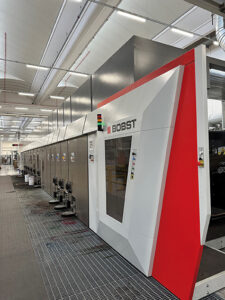
Toppazzini, a family-run business based in San Daniele del Friuli (Ud), the homeland of raw ham, is categorized as an integrated box manufacturer. This means that, in addition to converting corrugated board, they also have their own corrugators, allowing them to produce the raw material internally. As a result, they meet nearly all their production needs, with only 5% of the cardboard produced being sold to third parties. Additionally, Toppazzini has a specialized machine for producing honeycomb cardboard, a highly durable material used primarily in their core market, great packaging and cushioning elements for the furniture industry. The rest of their production, as demonstrated by the award-winning project, is aimed at food and beverage industry, creating high-quality printed packaging for wineries and major multinational beer companies. The company employs around 180 people, operating in three shifts, and last year produced approximately 145 million sm of cardboard.
“We exclusively use flexographic printing machines, and we recently added the new 9-color Master DRO by BOBST, which allows us to print both the inside and outside of packaging in a single pass, depending on the specific job requirements. The award-winning work at Best In Flexo was printed on this machine, making it ideal for producing high-quality beverage industry packaging. The coated board for both the interior and exterior was produced using our Fosber corrugator. As for die-cutting, we decided in agreement with our customer to use an offline process with our MasterCut BOBST. Although our Master DRO allows for inline rotary die-cutting, we prefer to use that feature for other types of jobs”, explains Umberto Toppazzini, representing the third generation of the family company.
The project in detail: the extraordinary of a standardized process
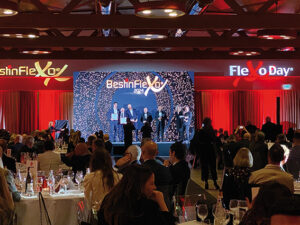 The graphic design submitted for the competition was a prosecco bottle box featuring a gold-toned image. The real challenge was that this was Toppazzini’s first project with simultaneous inside and outside printing using only CMYK colors. Remarkably, they managed to reproduce a gold tone that would +traditionally require a special Pantone color. “With Carminati’s support, we managed to handle this project smoothly. Having a dedicated printing machine for this type of work allowed us to execute the job precisely and consistently, a great starting point”, says Umberto.
The graphic design submitted for the competition was a prosecco bottle box featuring a gold-toned image. The real challenge was that this was Toppazzini’s first project with simultaneous inside and outside printing using only CMYK colors. Remarkably, they managed to reproduce a gold tone that would +traditionally require a special Pantone color. “With Carminati’s support, we managed to handle this project smoothly. Having a dedicated printing machine for this type of work allowed us to execute the job precisely and consistently, a great starting point”, says Umberto.
From Carminati’s perspective, the real achievement lays in the ordinary management of a standardized process: the technical teams at Toppazzini and Carminati worked closely to find the best technical and technological solutions, ensuring a fast setup with minimal waste and an optimized printing process. “For us, simultaneous inside and outside printing was the main challenge, as we needed to maintain consistent color coherence on both sides in a single pass. It was a type of project neither we nor Toppazzini had tackled before”, adds Carminati, noting that two different ink types were used, three colors for the inside and four for the outside. The use of CMYK, where feasible, to reproduce a wide tonal range is a growing trend in flexo printing. However, it is important to acknowledge that not all colors can be reproduced using only CMYK, and compromises must sometimes be made in terms of color accuracy. From a technical perspective, significant advancements have been made in microcell research in prepress. Dedicated softwares now allow to reproduce color tones expanding color gamut.

“To produce photopolymer plates for Toppazzini, we used our patented OLed system, a technology we designed and patented. This system enables the use of microcells that would otherwise be impossible to use, especially on the traditionally thicker plates used for corrugated board”, explains Carlo Carminati. He confirms that the company will continue investing in workflow automation and training programs for its newly hired young professionals. Also on the customer front, Carminati will organize training days for individual companies in order to fully understand the proposed technological innovations so as to speak a common language, which as we saw at the Best In Show, can lead to excellent goals.
The next major event will take place in 2026 with the FTA Europe Diamond Awards, where Carminati and Toppazzini, alongside other Italian winners at the last two Best In Flexo editions, will compete against the best flexo printing and prepress companies in Europe.






